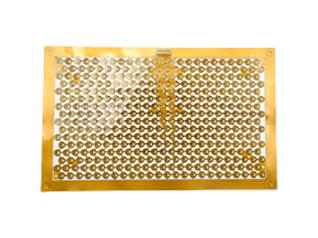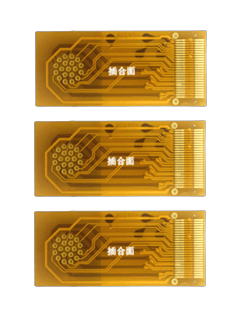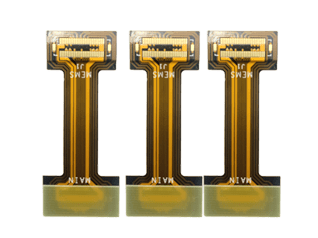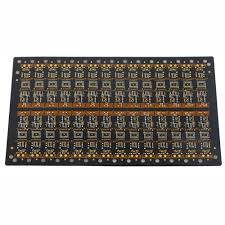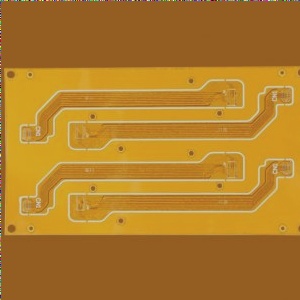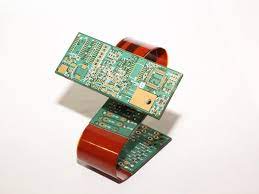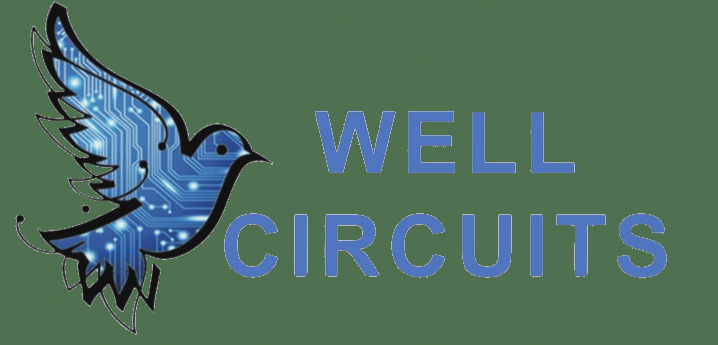WellCircuits specializes in producing high-precision and complex flex PCBs that include multilayer flex PCBs and ultra long flex PCBs along with 90° degree bending flexible circuits. The company specializes in manufacturing flex PCBs that range from 1 to 32 layers within China.
Flex and Rigid-Flex PCB
Flexible PCBs consist of flexible substrates that are both extremely thin and lightweight while rigid-flex PCBs integrate rigid and flexible technologies to enhance versatility and mobility. This section provides additional details about flexible technology compared to rigid technology and addresses some commonly asked questions (FAQs). Read further if interested in the latest PCB design trends.
What is the flexible circuits printed on boards?
The substrate of flexible PCBs combines exceptional bendability with high tensile strength and physical flexibility, which allows these boards to be shaped into complex three-dimensional forms for application in multiple industries. Initially developed for military applications because of their durability and lightweight nature, flexible boards have since gained popularity across multiple fields, including medical devices, fitness wearables, cameras, and as replacements for wiring harnesses or ribbon connectors.
Flexible PCB classifications that are dependent on the configuration
Flexible circuits fall under three main categories, which include one-sided boards as well as double-sided boards, and multi-layered boards.
Single-sided
The construction of single-sided flexible circuit boards represents the most basic method among flexible board types. A single conductor layer on a flexible substrate forms its construction, which is sandwiched by a flexible polyimide layer and a fine copper sheet, while holes in the surface enable component leads to pass during soldering processes, and coverlays made from polyimide protect against environmental elements that may compromise circuit performance.
Double-sided
The construction of double-sided flexible circuit boards involves bonding two conductive layers to both sides of a polyamide flexible substrate. Copper foil is bonded to both sides through adhesive application, while plated holes or vias create electrical connections between layers, and protection layers are added to one side, both sides, or none, depending on circuit design demands.
Multi-layered flexible circuits
Multi-layered flex circuits consist of more than two conductors made of copper wire connected by vias or PTHs – much like double-sided boards – providing an efficient means of solving design challenges related to specific impedance specifications, crossings that cannot be avoided and crosstalks, component density, and shielding.
What are the components that are used to make flexible PCBs?
Rigid-flex boards combine flexible and rigid technologies into one package. Flexible circuits may be utilized to interconnect rigid PCBs, while Rigid-Flex sections typically consist of multiple layers.
Holes provide interconnectivity among layers, while rigid-flex boards use flexible and rigid PCB components like core, preregs, copper foil coverlay, flexible laminates, and bond plies to form their structure.
Flexible PCB material typically measures only several microns thick and is easily scratchable, making it preferred over rigid boards in PCB fabrication. Flexible circuits use unreinforced substrates of dielectric polyimide film clad with copper rolls that are significantly more flexible than rigid board copper foils used on rigid PCs. Bondply film serves to form conductivity layers similar to prepreg, being coated on both sides with adhesive that insulates external surfaces of stack-up stacking structures while still offering conductivity layers as in rigid boards, prepreg does.
Flexible materials offera superior dielectric constant than their rigid counterparts, as they feature uniform thickness due to being composed of acrylic plastic material rather than glass fiber interweaves that vary in their thickness over time. Below are examples of our most frequently employed flexible products.
DuPont Pyralux(r) Advanced PolyamidTM and DuPont Pyralux LF for wear resistance
What are the benefits of using flex boards?
The flexible printed circuit board decreases the amount of space consumed and increases flexibility for a slimmer and denser design. It also assists in decreasing the assembly process and increasing quality and reliability. Flex is a solution for ensuring the reduction in size and flexibility of electronic devices.
The PCBs also provide many additional benefits, including:
- Make connections less crowded to make it easier for the assembly. This means they can eliminate the chance of problems with interconnections, such as poor solder joints. That makes them ideal for PCB assembly. much more secure than rigid PCBs.
- A superior resistance to vibrations as well as other disturbances in harsh environments.
- More efficient airflow and dissipation of heat.
- Costs for assembly are lower than traditional wiring harnesses.
- The elimination of wiring harnesses results in no wire errors. This makes it easier to test the procedure, and also lowers the expenses of assembling.
- Make sure that connectivity problems are eliminated when the components are being assembled to avoid waste and costs.
What's the distinction what is the difference between FFC as well as FPC?
FFC (flexible flat cables) is a type of cable electrically flexible and flat, whereas an FPC is a flexible and printed circuit. FFC is a form of ribbon cable, and it is named in honor of its wide and flat design. These are typically straight connectors used in PCB layout that do not have any other components. FFC cables typically consist of a film made of plastic with multiple connectors made of metal are attached. The distance between them is known as”pitch”.

